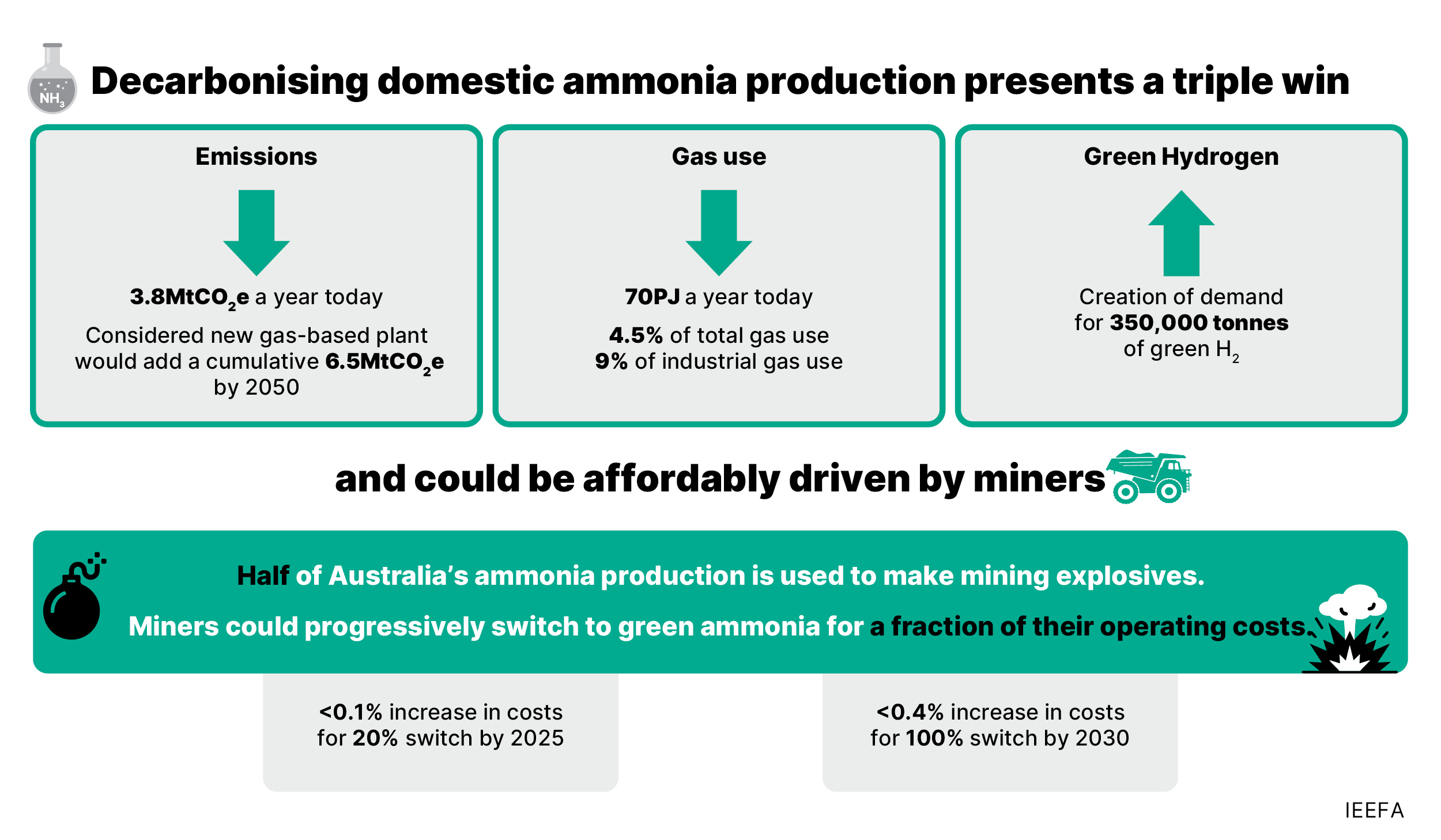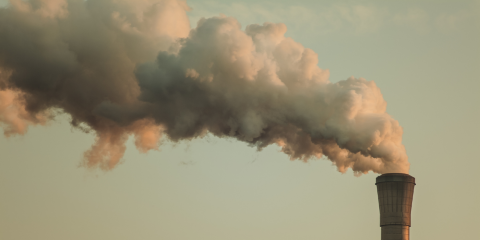How mining can ignite Australia’s green hydrogen boom

Households and businesses to benefit from lower energy bills
Key Takeaways:
Decarbonising Australia’s ammonia production facilities would present a triple win: alleviating domestic gas market pressures; reducing emissions; and catalysing Australia’s emerging green hydrogen industry.
Adoption of green hydrogen in ammonia production is currently slow, but a proposed new ammonia plant in Western Australia, while currently gas-based, presents a timely opportunity to demonstrate large-scale integration of renewables and green hydrogen.
Miners consume about half of Australia’s ammonia through explosives; they could shift to green explosives for a minimal increase in operating costs, with the right incentives.
Government could help accelerate the shift to green explosives through improved data transparency, regulation and targeted support to complement miners’ commitments.
29 February 2024 - (IEEFA Australia): A new report from the Institute for Energy Economics and Financial Analysis (IEEFA) finds that, by switching ammonia production facilities from fossil gas to green hydrogen, Australia could lead the world in the production of green ammonia and lay the foundation for a new green hydrogen industry.
IEEFA Australia’s CEO, Amandine Denis-Ryan said, “Ammonia production stands out as a logical early adopter of green hydrogen. Changing these processes is a relatively quick, simple step that could expedite the emergence of a green hydrogen industry in Australia. Unlike other sectors, ammonia’s production process already involves hydrogen as an intermediary product, and Australia’s existing ammonia plants are perfectly placed geographically in regions with abundant renewable resources.”
These regions – the Pilbara, Kwinana, the Hunter and Gladstone – have all been identified as potential hydrogen hubs under Australia’s National Hydrogen Strategy and offer the potential of large-scale demand clusters. Switching all of Australia’s current ammonia production away from gas would create demand for around 350,000 tonnes of green hydrogen.
Report co-author and IEEFA Guest Contributor Cameron Butler, said, “Traditionally the ammonia supply chain has been highly energy-intensive. Ammonia production accounts for roughly 5% of Australia’s total gas use, making it the second-highest user of gas across Australia’s manufacturing sectors. Decarbonising ammonia facilities presents the opportunity of a triple win: alleviating domestic gas market pressure; reducing emissions; and catalysing Australia’s emerging green hydrogen industry.”
However, the report finds that progress is currently slow. Widespread adoption is being hindered by relatively high production costs for green hydrogen, a lack of demand at premium prices, and insufficient policy drivers.
With more than half of Australia’s ammonia used to produce explosives, miners wield significant influence and could play a pivotal role in accelerating the transition to green hydrogen and ammonia. According to IEEFA’s analysis, shifting to green explosives would be affordable for miners: switching to 20% green ammonia by 2025 would increase their operating costs by less than 0.1%; while a complete switch to 100% green ammonia by 2030 would increase costs by a maximum of 0.4%.
“By setting green explosives adoption targets, miners could guarantee offtake and provide the certainty required to shift investment from suppliers,” added Mr Butler. “However, miners currently lack incentives to do so. Government will be crucial in driving and complementing action by miners by addressing data transparency challenges and reducing investment risk.”
A planned expansion of CSBP’s ammonia plant in Kwinana, Western Australia, presents a powerful opportunity to demonstrate the large-scale integration of renewables and green hydrogen in the domestic ammonia supply chain. Under current proposals, the expanded plant would be fuelled by gas. However, if the expansion was based on green hydrogen instead, it could create demand for about 53,000 tonnes of green hydrogen.
“The expansion of CSBP’s ammonia plant provides a timely and pivotal moment for miners to catalyse change and drive the adoption of green ammonia in Australian mining and the emergence of a green hydrogen industry,” said Ms Denis-Ryan. “The convergence of miner influence, market-driven incentives and government support forms a compelling case for accelerating the transition to green ammonia. By embracing this opportunity, government and industry could kickstart the emergence of a green hydrogen industry for Australia.”
Read the report: How Mining Can Ignite Australia’s Green Hydrogen Boom
Media contact: Amy Leiper, ph 0414 643 446, [email protected]
About IEEFA: The Institute for Energy Economics and Financial Analysis (IEEFA) examines issues related to energy markets, trends, and policies. The Institute’s mission is to accelerate the transition to a diverse, sustainable and profitable energy economy. (ieefa.org)












